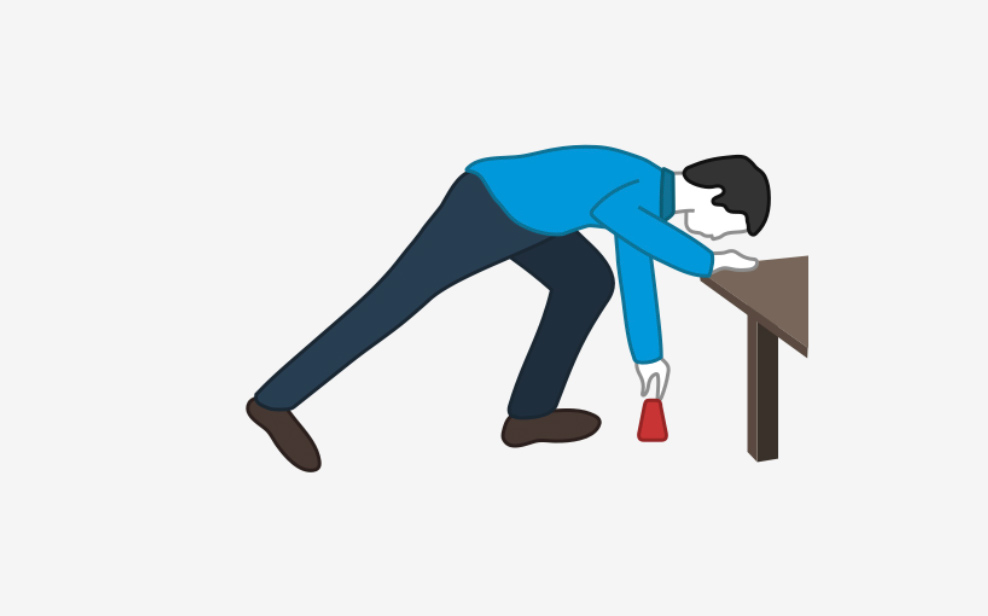Your spine is made up of four main parts. From top to bottom the parts are: the cervical (neck), thoracic (mid-body), lumbar (lower back) and sacral (tailbone) spine. The cervical and lumbar parts curve inward while the thoracic and sacral curve outward. From the side, there’s an appearance of a slight S-shape.
There are two muscle groups in front of and behind the spine that can cause back pain. The muscles in front are called the flexors which allow us to bend forward and lift heavy objects. The muscles behind the spine are called the extensor muscles. The extensor muscles allow us to stand up straight. Lifting something heavy wrong can be one leading factor to back pain.
What Is Good Posture?
Good posture is standing in a way where the least strain is being put on the muscles supporting your spine. This typically means being in a position where your spine is in its neutral shape.
Here are some ways to maintain good posture in everyday motions:
While Standing Up
- Align your feet and knees
- Bend over so your nose is over your toes
- Push up from the chair using your thighs and hands as needed
While Getting Out Of Bed
- Roll onto your side and bend your knees
- Align your shoulders and hips
- Place your top hand on the bed in front of your chest
- Push with your top hand and slide your legs off the side
- Slowly stand up
While Bending Over
- Bend down keeping one leg on the ground and lifting one leg behind you
- Reach for the object with the arm on the same side as the leg on the ground
- Slowly stand back up using the air-bound leg as a lever
While Getting Out Of A Car
- Back up the car seat as far as possible
- Bring the leg closest to the door out of the car, first
- Turn your hips and shoulders in the same direction
- Place one hand on the back of the seat and one on the dashboard
- Push up to a standing position
Sitting
It’s recommended you avoid sitting for long periods of time as much as possible because your spine is more likely to be rounded while you sit, which increases the stress on your spine. When sitting, try to find a chair with back support. If your chair doesn’t have back support, try creating a lumbar roll. An example of a lumbar roll is a towel rolled up and placed in the curve of your back. It may also help to sit in a firm chair as opposed to a squishy sofa because a firm chair supports the curve in your back.
Sleeping & Lying Down
Similar to a chair, a firm mattress is recommended. Depending on your mattress, you can place a board under it to reduce sagging. In addition to firming your mattress, you can also use extra back support to make sleeping more comfortable. You can buy different back support products at your local store or try tying a rolled sheet around your waist. It’s also recommended you try to refrain from sleeping with your knees up at your chest to reduce rounding in your spine.
Sexual Activity
While sex may seem difficult or painful with your symptoms, it’s possible if you make some adjustments. Keeping open communication with your partner is essential when trying to find new ways to have sex without pain. Try positions where you can keep your back as supported as possible. Avoid having sex on soft, cushy surfaces.
Always consult your healthcare provider to determine the appropriateness of this information for your own situation or if you have any questions regarding your medical condition, diagnosis, procedures, treatment plan, or other health related topics.

